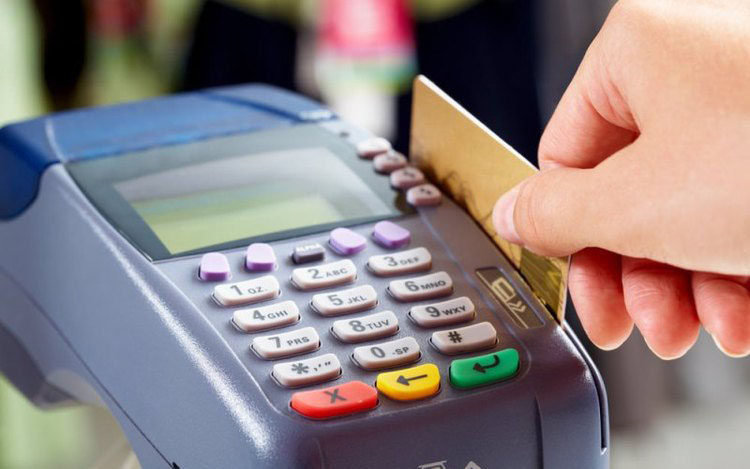Plastic money use: Learn from Sweden

Dr Keith Guzah Correspondent
In 1661, Sweden was the first country in Europe to introduce banknotes through the Stockholms Banco, which later formed the country’s central bank. Interestingly, Sweden has become the world’s first cashless society where physical money is not accepted in most transactions, including as church offerings! Yes, you cannot even buy a bus ticket or a candy bar with cash, or coins for that matter, which retailers are legally entitled to refuse.
It is a trend that has set in in the Nordic countries of Norway, Denmark and Finland but in Sweden cash transactions are a reported two percent, with the figure said to be 0,5 percent lower in two years’ time.
The global average use of cash is said to stand on 75 percent.
According to an article that appeared in the UK Guardian recently, 900 of Sweden’s 1 600 bank branches no longer keep cash on hand or take cash deposits — and many, especially in rural areas, no longer have ATMs.
Electronic transactions by way of cards are now the main form of payment, with Sweden topping Europe.
Explains the paper: “Even Swedish churches have adapted, displaying their phone numbers at the end of each service and asking parishioners to use Swish to drop their contribution into the virtual Sunday collection. One Stockholm church said last year only 15 percent of its donations were in cash; the remainder were all by phone.”
Now the reader, with the cash shortages that have bedevilled our economy, may be reading this with fascination and thinking that the Swedish example is out of place. It is not, despite the fact that the country is far advanced economically and technologically — with such monetary policy pedigree.
The good thing is that, first, there is no harm in aspiring for the best and second, and most importantly, catching up with development is far much easier in this day of globalisation.
Background
Yet, I may have run too far ahead of myself.
It is common knowledge that during the last quarter of 2016, the Fiscal Authority, Reserve Bank of Zimbabwe introduced a “surrogate” currency in the form of bond notes under the $250 million AfreximBank facility.
The facility was meant to stimulate exports through an Export Incentive Scheme. The impact of the Export Incentive Scheme is most attested in mining and agricultural sectors.
Gold production has been immensely spurred and tobacco production is on a similar trend.
Bond currency was envisaged to stem the flow of money from Zimbabwe as it cannot be spirited out the way the US dollar does, with foreigners and local businesspeople bringing cheap imports sold in US dollars and keeping the money out of the banking system. The RBZ just could not cope with the pressure build-up on the US dollar.
The bond currency has held its own — especially so when it was predicted to usher a meltdown of the economy through hyperinflation which the other local currency, the old Zimdollar was associated with. While that has not happened, thankfully, the transacting public has not experienced a sudden turnaround of their business experiences.
Banks are short of money — including bond notes — and the black market is apparently thriving again.
Going Swedish
In light of these challenges, a discernible trend has been towards the use of plastic money and electronic transactions which have risen greatly.
A fortnight ago, the RBZ announced that plastic and electronic money now accounts for 70 percent of the payments in Zimbabwe and to encourage use of plastic money. The RBZ was revising the transactions fees downwards.
It offered an incentive to fight cash hoarding, promising a reward equivalent to 5 percent of the reported and recovered cash amount.
There we are!
At this rate Zimbabwe will very soon be the Sweden of Africa, although, it may have come through painful experiences like shortages and the hyperinflation of the past era.
Yet Zimbabweans adjust quickly — and this is a good reason to be optimistic. To achieve this, point of Sale facilities need to be availed in all communities from the bottom of the pyramid. We need to be much more ballistic with liberalising the use of plastic money. One way that could be improved is the cost of using the facility. The Government needs to lead from the front by further reducing current stamp charge of five US cents per transaction.
The current charges per transaction is very prohibitive and difficult to sell to the rural folks. We need to effectively translate the use of plastic money into a revolution of the financial sector.
Dr K.N. Guzah (MP), is a black empowerment and indigenisation guru and founding president of the National Business Council of Zimbabwe.
There is need for a Rapid Education Programme in the Rural Areas and marginalised communities to stave off the apathy in the use of the plastic money technology.
There is need to demystify the Point of Sale (POS) machines and their use using swipe cards. The financial system must target near zero handling of cash — the Swedish way.
All service providers and local authorities must be compelled to avail the POS services.
To that end, there is need for the banks and Government to collectively make investment plans and allocate more resources towards development of plastic money services so that they are accessed by both the urban and the rural population.
Institutions, especially the banking institutions should come up with ways to cater for the informal sector and incorporate them in the plastic money system because that is where the money is.
Banks should also allocate more resources into their research and development sectors so that their technology is up to date and does not inconvenience plastic money users in any way.
Banking Institutions again should loosen up the process of applying for POS machines and not only that but make it public information of how to apply for one so as to encourage businesses to adopt this technology
The Government through its ministries and departments should follow through on retailers.
Government must invite all empowerment organisations and come up with an all-encompassing Stakeholders’ Economic Strategic Declaration that should speak to the needs of small and medium enterprises and entrepreneurs, right from the bottom of the pyramid.
Financial facilities by the Reserve Bank of Zimbabwe must be economic stimulants with relaxed accessibility as opposed to the stringent conditions that are often attached to them.
The facilities must essentially be targeting local production and export-oriented entities.
There must be a visible value chain that falls into the main categories of the Zim-Asset blueprint.
Meanwhile, there must be foreign currency reserves set aside for retooling as archaic machinery and plant without spare parts are a major setback in any economic recovery programme.
It is heartening to note, as RBZ reported a fortnight ago, that it is now able to provide about $100 million forex each week. Imports and Nostro holdings have increased by 50 percent to US$450 million as at Easter.
All this is good news and Zimbabwe can start a new cashless revolution from the ashes of current challenges.
Dr K.N. Guzah (MP), is a black empowerment and indigenisation guru and founding president of the National Business Council of Zimbabwe.







Comments